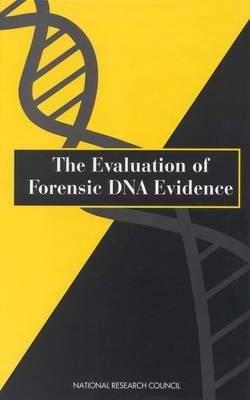Overview
In 1992 the National Research Council issued DNA Technology in Forensic Science, a book that documented the state of the art in this emerging field. Recently, this volume was brought to worldwide attention in the murder trial of celebrity O. J. Simpson. The Evaluation of Forensic DNA Evidence reports on developments in population genetics and statistics since the original volume was published. The committee comments on statements in the original book that proved controversial or that have been misapplied in the courts. This volume offers recommendations for handling DNA samples, performing calculations, and other aspects of using DNA as a forensic tool—modifying some recommendations presented in the 1992 volume. The update addresses two major areas: Determination of DNA profiles. The committee considers how laboratory errors (particularly false matches) can arise, how errors might be reduced, and how to take into account the fact that the error rate can never be reduced to zero. Interpretation of a finding that the DNA profile of a suspect or victim matches the evidence DNA. The committee addresses controversies in population genetics, exploring the problems that arise from the mixture of groups and subgroups in the American population and how this substructure can be accounted for in calculating frequencies. This volume examines statistical issues in interpreting frequencies as probabilities, including adjustments when a suspect is found through a database search. The committee includes a detailed discussion of what its recommendations would mean in the courtroom, with numerous case citations. By resolving several remaining issues in the evaluation of this increasingly important area of forensic evidence, this technical update will be important to forensic scientists and population geneticists—and helpful to attorneys, judges, and others who need to understand DNA and the law. Anyone working in laboratories and in the courts or anyone studying this issue should own this book. Table of Contents Front Matter Executive Summary Overview 1 Introduction 2 Genetic and Molecular Basis of DNA Typing 3 Ensuring High Standards of Laboratory Performance 4 Population Genetics 5 Statistical Issues 6 DNA Evidence in the Legal System Abbreviations Glossary Biographical Information Acknowledgments References Index
Full Product Details
Author: National Research Council ,
Division on Earth and Life Studies ,
Commission on Life Sciences ,
Committee on DNA Forensic Science: An Update
Publisher: National Academies Press
Imprint: National Academies Press
Dimensions:
Width: 15.20cm
, Height: 1.50cm
, Length: 22.90cm
Weight: 0.454kg
ISBN: 9780309121941
ISBN 10: 0309121949
Pages: 272
Publication Date: 12 January 1997
Audience:
Primary & secondary/elementary & high school
,
Educational: Primary & Secondary
Format: Paperback
Publisher's Status: Active
Availability: In Print

This item will be ordered in for you from one of our suppliers. Upon receipt, we will promptly dispatch it out to you. For in store availability, please contact us.
Author Information
Committee on DNA Forensic Science: An Update, National Research Council




